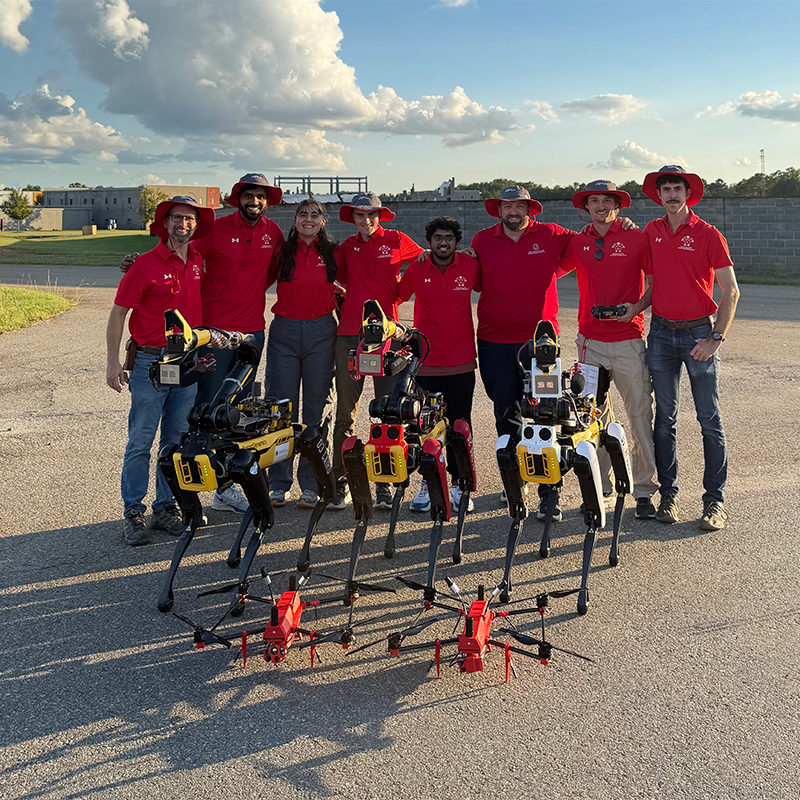News Story
Stealth strategy paper by Justh, Krishnaprasad published
ISR Assistant Research Scientist Eric Justh and Professor P.S. Krishnaprasad (ECE/ISR) have a new article, "Steering Laws for Motion Camouflage," highlighted and published online in the Proceedings of the Royal Society of London, Series A.
Visual insects such as hoverflies and dragonflies, using their remarkable compound eyes, display a geometric strategy for stealth while engaged in mating behaviors, territorial battles and predation. This strategy consists of flight patterns in which a pursuer insect manages to camouflage its movement from a pursuee by blending with fixed objects in the background. Echolocating bats that hunt insects in the dark using ultrasound sonar also employ a flight strategy geometrically indistinguishable from that of motion camouflage (see Ghose, Horiuchi, Krishnaprasad and Moss in PLoS Biology). The neurobiological basis of how such flight strategies are realized in nature is unknown. In this paper, Justh and Krishnaprasad develop a simple model of interacting particles that represents the engagement of pursuer and pursuee. They then proceed to derive a biologically plausible feedback law that captures the phenomenon of motion camouflage. There is a close similarity between this law and control algorithms used in the field of missile guidance.
The models, methods and computational work in this paper offer biologists tools to explore behaviors in nature, where the constraints of physics meet the computational power of sensorimotor systems.
Published July 5, 2006









